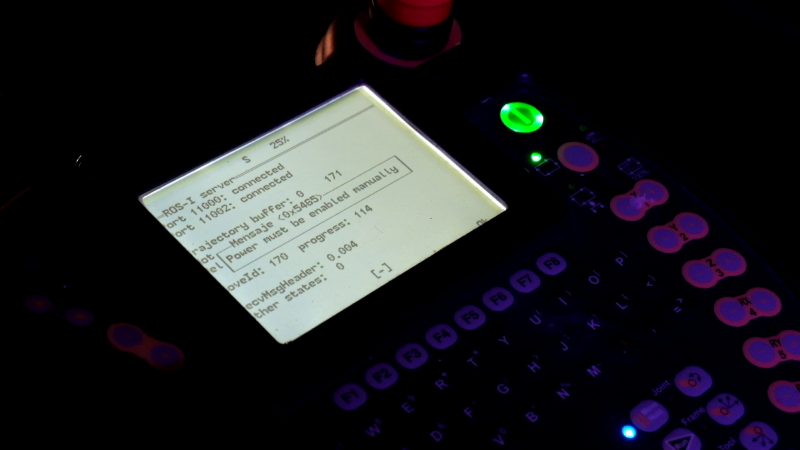Robot gesturality
Robot gesturality was a project in collaboration with Stäubli. Coudre's objective was to research new ways in which industrial robots could be controlled by humans, and the gestural possibilities of a 6-axis robotic arm within the framework of handicraft techniques.
The TX-60 is an industrial robot model that is normally controlled through written code in Stäubli's proprietary software. We first tried to find a way to control this machine more intuïtively, especially by people who don't know how to code such as the artists and designers we teach or collaborate with.
For this purpose, we developed an open-source plugin for Blender (open-source 3D software) that translates 3D animations of a simulated robot into actual movements in the physical machine. This allowed anyone to use Blender's graphical interface instead of coding. We called this plugin BlendeROS.
BlendeROS plugin on GithubIn order for the robotic arm to be able to use tools on our pieces, we designed and 3D-printed a series of parts that hold these tools and are attached to the last joint of the robotic arm. The first of these tools can hold a handle, the second a glaze sprayer gun, and the third a metal arc with a tensed metal thread (for cutting).
Lastly, we produced a series of traditionally-thrown ceramic pieces to be modified by the robot. The pieces have simple cylindrical shapes, to make the robot's interventions (cuts, engravings and brushwork) their focal point.




